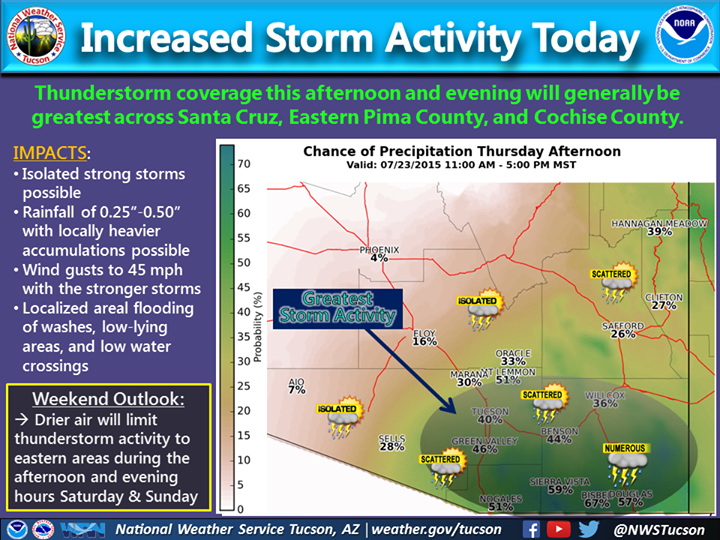
Unlike the summer monsoon, these winter rains are more sporadic, occurring about once a week for a couple months. Throughout the winter, we have a wet season that is not as strong as the summer monsoon, but it is equally important to our ecosystem. However, weather elements are subject to change depending on the year.

Winters in the Tucson area are delightful with mildly warm days averaging 65 degrees Farenheit and cool nights averaging 40 degrees Farenheit. Snow occasionally covers the desert floor, but afternoon temperatures facilitate a quick melt. If you are caught in a flash flood, go up! Climb as high as you can to avoid the water. Flash floods are known to sound like wind blowing through trees. Avoid being in canyons when rain is expected. Washes (dry river beds) will fill with water around the park, as well as drainages and canyons, sometimes resulting in a flash flood. The monsoon season is mating season for many of the animals of Saguaro National Park, and you can expect to get some wildlife sightings during this time. Monsoon season (June 15 - September 30) brings the desert to life! These rains occur mostly in the afternoons over the mountains, sending gushes of water down the drainages and onto the desert floor.

In fact, they are incredibly encouraged! The month of June is generally the driest as we wait for the summer monsoon to arrive.

Sunscreen, water, hats and sunglasses are never a bad idea out here. If you're looking to visit in the summer, make sure you are prepared for the elements of the Sonoran Desert. Daytime temperatures regularly reach well over 100 degrees with evening lows averaging 72 degrees. It's hot out here! Summers can reach extrememly high temperatures from early spring into fall. Chollas produce buds and flowers in the spring, with some continuing to bloom well into summer.


 0 kommentar(er)
0 kommentar(er)
